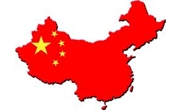Economy

China Opts Out of Global Forum on Excess Steel Capacity
Written by Tim Triplett
October 29, 2019
The international debate over the world’s oversupply of steel will go on, but without China’s participation in the G20’s Global Forum on Excess Steel Capacity. Ministers meeting in Tokyo over the weekend declined to extend the mandate for the forum, which is scheduled to lapse in December, primarily due to opposition from China. Other nations have vowed to continue communicating in search of a solution.
In a statement following the meeting, the Office of the U.S. Trade Representative said the decision by a vast majority of members to continue the work of the Forum beyond 2019 is a recognition that severe excess capacity is a continuing crisis.
“The United States will continue to work with like-minded partners to seek long-term solutions to the crisis of global excess capacity and the market distortions and global imbalances that it causes. This includes, but is not limited to, exchanging information on the policies and practices of countries at the root cause of the crises, whose measures generate and sustain steelmaking capacity misaligned with market forces. At the same time, we will continue to take necessary action to address the harmful impact of this ongoing crisis on U.S. companies and workers as well as our essential security interests.”
Thomas J. Gibson, president and CEO of the American Iron and Steel Institute, represented the U.S. industry at the working group meetings last week in Tokyo. “The reason for the Forum’s creation–a crisis of capacity over production that does not seem to be demanded by market forces–persists,” he commented to Steel Market Update. The current OECD estimate of the excess of capacity over production is still 440 MMT in a world that only demanded 1.7 billion MT in 2018. Disturbingly, the most recent report from the OECD on this topic warns that “capacity and production developments from the first half of 2019 point again to a widening gap between capacity and production this year,” he noted.
Many global steel associations continue to support the goals of the forum, said Gibson, referring to the joint statement that 19 steel associations issued in the lead-up to the GFSEC. “While I am disappointed that China has chosen to leave the GFSEC, the overwhelming majority of GFSEC members agree that the work of the Forum will continue.”
The European Commission also pledged to continue the Forum’s work to resolve the issue of global excess steel capacity and the distortion it causes to trade.
“There are no excuses: those who walk out on the Forum are turning their backs on multilateralism and on solving global problems through cooperation – and give cover to damaging and unacceptable unilateral actions,” said EU Commissioner of Trade Cecilia Malmström. “We call on China to exercise leadership, participate in the Forum and deliver on its commitments.”
The Commission said that the Global Forum platform remains open and invited OECD and G20 members to continue to join discussions.
Japan said it plans to pursue steel capacity discussions on a bilateral basis with China, following China’s decision to withdraw.
“GFSEC without China, or the forum with a different name, will be set after December to continue keeping eyes on excess steel capacity, but we as Japan believe China is still important on this issue. We offered China to have high-level bilateral talks to continue talking about excess steel capacity,” said an official from the Japan’s Ministry of Economy, Trade and Industry.
Most nation’s point to China, which produces more than half the world’s steel, as the main culprit behind the world’s excess steel capacity. In opposing extension of the GFSEC, Chinese representatives said they believe the forum “has achieved its goals.”
China’s Ministry of Commerce stated on Saturday, “China has slashed total steel production capacity by more than 150 million tonnes since 2016, or 114 per cent of the global steel capacity cut … and China has redeployed 280,000 steel workers, which is more than the combined deployed number of steel workers in the U.S., the EU and Japan.”
The Ministry claimed that China’s steel industrial policies aligned with WTO rules and “did not distort the market to cause excessive capacity.”
“While China’s steel capacity and output accounted for half of the world’s total, China’s domestic steel consumption accounted for nearly half of the world’s total as well – 93 percent of China’s steel output is used at home with only 7 percent being exported, and China is not disrupting global markets,” claimed China’s Ministry.
According to data from the World Steel Association, global crude steel production increased 3.9 percent to 1.391 billion metric tons in the first three months of 2019 compared to the same period a year ago. China’s crude production during the same period increased 8.4 percent to 748 million MT compared to an increase of 0.3 percent in North America and a decrease of 2.8 percent in the EU.

Tim Triplett
Read more from Tim TriplettLatest in Economy

Architecture billings continue to slide in March
Architecture firms said billings continued to decline in March, according to the latest Architecture Billings Index (ABI) released by the American Institute of Architects (AIA) and Deltek.

Beige Book shows concerns about trade policy
Manufacturing was mixed, but two-thirds of districts said activity was little changed or had declined.

New York state manufacturing index drops again in April
Firms were pessimistic, with the future general business conditions index falling to its second lowest reading in the more than 20-year history of the survey

Construction adds 13,000 jobs in March
The construction sector added 13,000 jobs, seasonally adjusted, in March, but tariffs could undermine the industry.

Supply chains, end-users brace for impact from tariffs
Supply chains are working through what the tariffs mean for them
